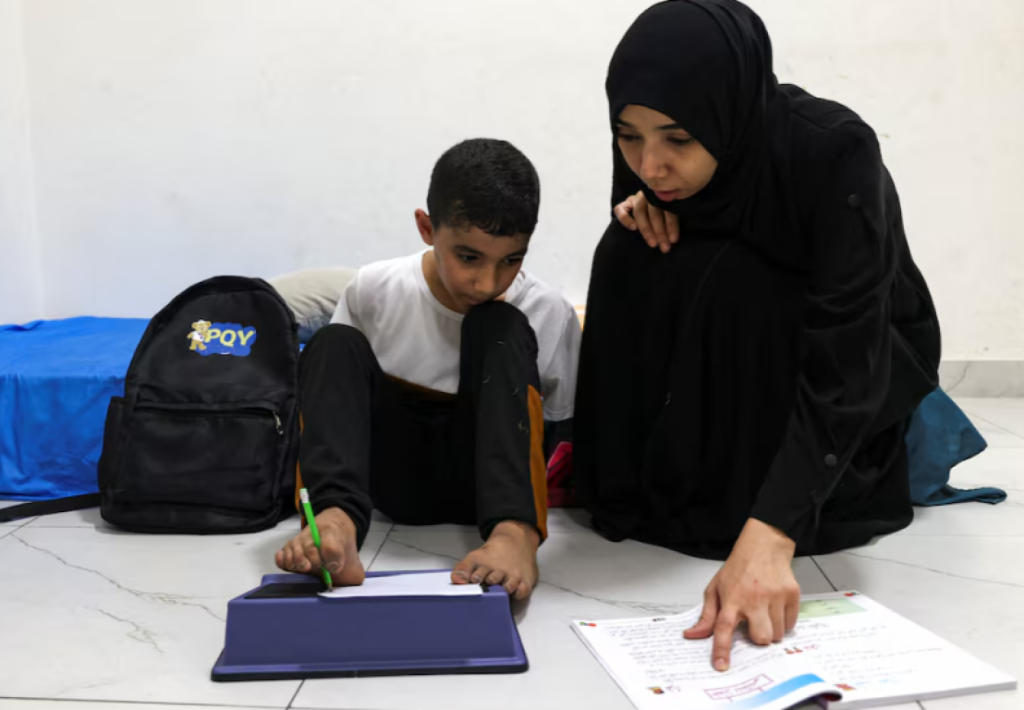The story of Mahmoud Ajjour serves as a powerful testament to the resilience of Palestinian children facing unimaginable trauma, particularly in the wake of the devastating impact of Israeli airstrikes. At just nine years old, Mahmoud became a poignant symbol of childhood suffering when he lost both arms to an airstrike, a moment that not only captured the world’s attention but also won a World Press Photo award for its haunting portrayal. His experiences reflect the broader narrative of children in Gaza, whose dreams and innocence are often shattered by conflict. In the struggle for recovery, Mahmoud’s hope is pinned on receiving prosthetic limbs for children like him, which could finally allow him the independence to play, help his family, and embrace life fully. As we delve deeper into Mahmoud Ajjour’s story, we uncover the profound psychological impacts of Palestinian child trauma and the urgent need for compassion and support in rebuilding their lives.
Mahmoud Ajjour’s journey strikes a chord with the ongoing plight of many young lives in Gaza, illustrating the deep scars left by wartime experiences. This account sheds light on the myriad struggles faced by children amid conflict, emphasizing their resilience in the face of adversity. As one of the many affected by the catastrophic effects of violence, Mahmoud’s tale highlights the critical importance of providing care, especially in the form of prosthetic limbs, which can significantly restore a sense of normalcy and self-sufficiency. Furthermore, it calls attention to the urgent requirement for global awareness and intervention to alleviate the traumatic experiences endured by countless Palestinian children. By sharing Mahmoud’s narrative, we can spread understanding and advocate for compassionate actions that support the healing and rehabilitation of these innocent souls.
The Impact of the Israeli Airstrike on Mahmoud Ajjour’s Life
Mahmoud Ajjour’s story illustrates the devastating effects that conflict can have on innocent lives, particularly in regions like Gaza where children are often the most affected. The Israeli airstrike that tragically resulted in the loss of his arms serves as a poignant reminder of the trauma experienced by countless Palestinian children. This incident not only altered Mahmoud’s physical condition but also impacted his mental and emotional health, leading to experiences of fear, confusion, and grief at a tender age. Such trauma is common among children in conflict zones, highlighting the urgent need for psychological support and rehabilitation for young victims of war.
As Mahmoud begins to adapt to his new reality, the void left by the traumatic experience lingers in his mind. His mother’s account of his struggles—sometimes shying away from playing or venturing outside—underscores how the lingering effects of violence can haunt a child long after the physical wounds have begun to heal. This emotional trauma needs addressing, alongside the provision of prosthetic limbs, to ensure that children like Mahmoud not only regain physical functionality but also recover the joy they deserve in their youth.
Frequently Asked Questions
What is the significance of Mahmoud Ajjour’s story in highlighting Palestinian child trauma?
Mahmoud Ajjour’s story serves as a poignant reminder of Palestinian child trauma, illustrating the profound impact of conflict on young lives. After losing both arms in an Israeli airstrike, Mahmoud became a symbol of resilience, capturing international attention with the World Press Photo award. His experiences reflect the broader struggles faced by many children in Gaza.
How has Mahmoud Ajjour’s story influenced discussions on prosthetic limbs for children affected by war?
Mahmoud Ajjour’s journey has brought attention to the urgent need for prosthetic limbs for children impacted by conflict. His recent medical treatment in Doha highlights the challenges faced by Palestinian children like him, many of whom lack access to necessary healthcare and rehabilitation. As Mahmoud undergoes fitting for prosthetics, his story emphasizes the importance of support for rehabilitating war-affected youth.
What role does Mahmoud Ajjour play in showcasing the impact of Israeli airstrikes on children in Gaza?
Mahmoud Ajjour’s story vividly illustrates the devastating impact of Israeli airstrikes on children in Gaza. His experience of surviving such a traumatic event at a young age sheds light on the physical and emotional wounds inflicted by war. By sharing his journey, Mahmoud brings awareness to the plight of many children who face similar tragedies.
In what ways do Mahmoud Ajjour’s experiences resonate with other Gaza children’s stories?
Mahmoud Ajjour’s experiences resonate deeply with other Gaza children’s stories, embodying themes of resilience and the traumatic effects of war. His journey from surviving an Israeli airstrike to seeking joy despite adversity reflects the shared experiences of numerous children in the region, resonating with their struggles and hopes for a brighter future.
How did Mahmoud Ajjour’s photo win the World Press Photo award, and why is it significant?
Mahmoud Ajjour’s photo, captured by Samar Abu Elouf, won the World Press Photo award due to its powerful portrayal of a young boy’s survival amidst the horrors of war. The image serves as a haunting testament to the effects of conflict on children, raising awareness about Palestinian child trauma and compelling audiences worldwide to recognize their suffering.
| Key Point | Details |
|---|---|
| Mahmoud Ajjour’s Trauma | Lost both arms due to an Israeli airstrike in Gaza on December 6, 2023. |
| Symbol of Children’s Suffering | His photo won the World Press Photo of the Year, highlighting the impact of war on children. |
| Recovery Journey | Now living in Doha, Qatar for medical treatment after evacuation from Gaza. |
| Joy of Childhood | Despite his challenges, Mahmoud finds moments of happiness, such as flying a kite. |
| Prosthetic Limbs | Doctors fitting him for prosthetics at Hamad Limb Hospital; he is eager to gain independence. |
| Challenges in Recovery | Experiences emotional and physical pain post-surgery; expresses sadness over lost functions. |
| Future Aspirations | Dreams of becoming a journalist to share stories of other children in Gaza. |
Summary
The story of Mahmoud Ajjour illustrates the resilience and unyielding spirit of children impacted by conflict. Mahmoud, who tragically lost both arms in an Israeli airstrike, represents not just personal trauma but the broader suffering of Palestinian children. His journey, from debilitating loss to gradually reclaiming joy through the hope of prosthetics, highlights the urgent need for awareness and action regarding the humanitarian impact of war on young lives. As he dreams of a future where he can help others through journalism, Mahmoud’s story serves as a poignant reminder of the strength found in vulnerability and the importance of support in recovery.



